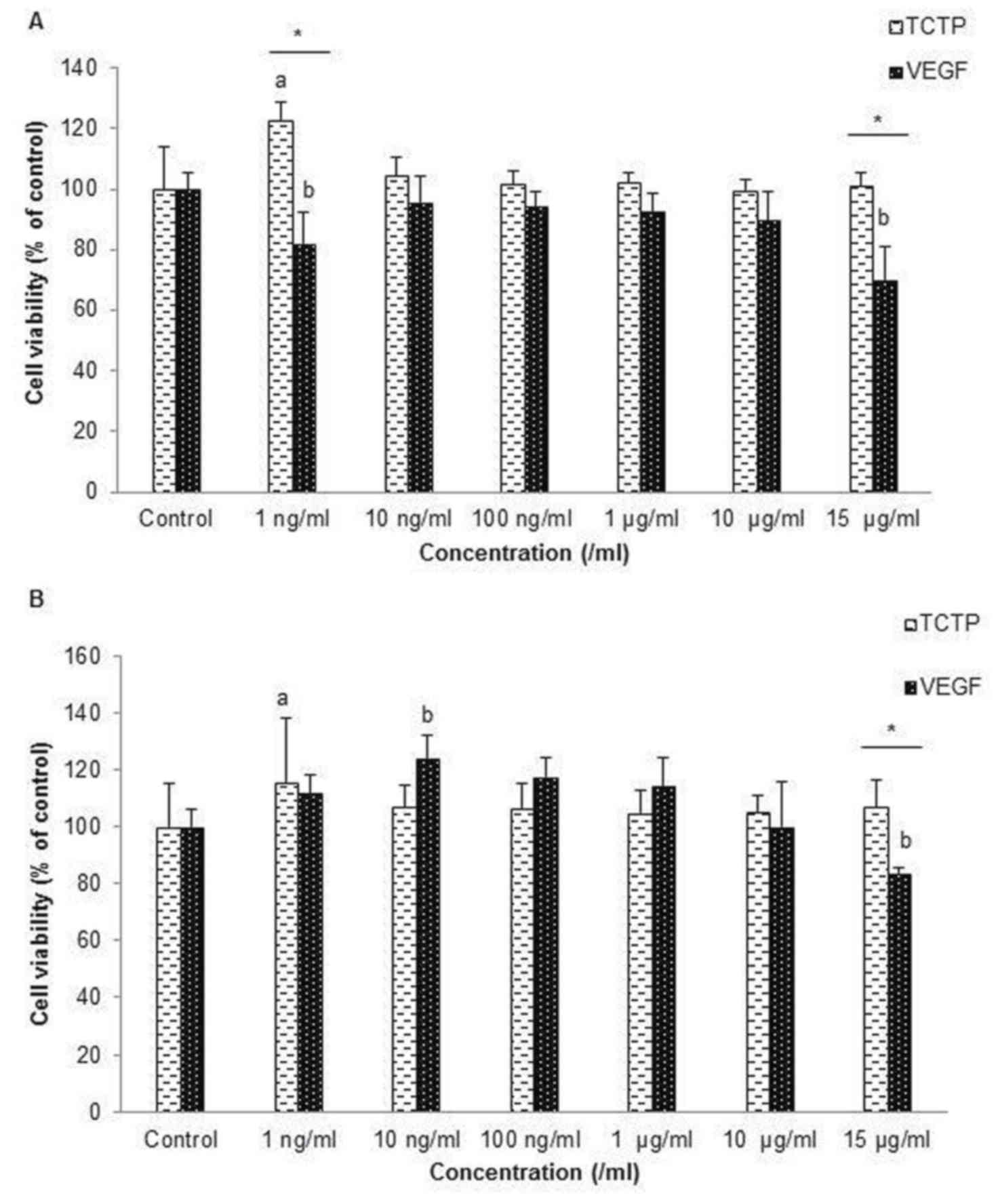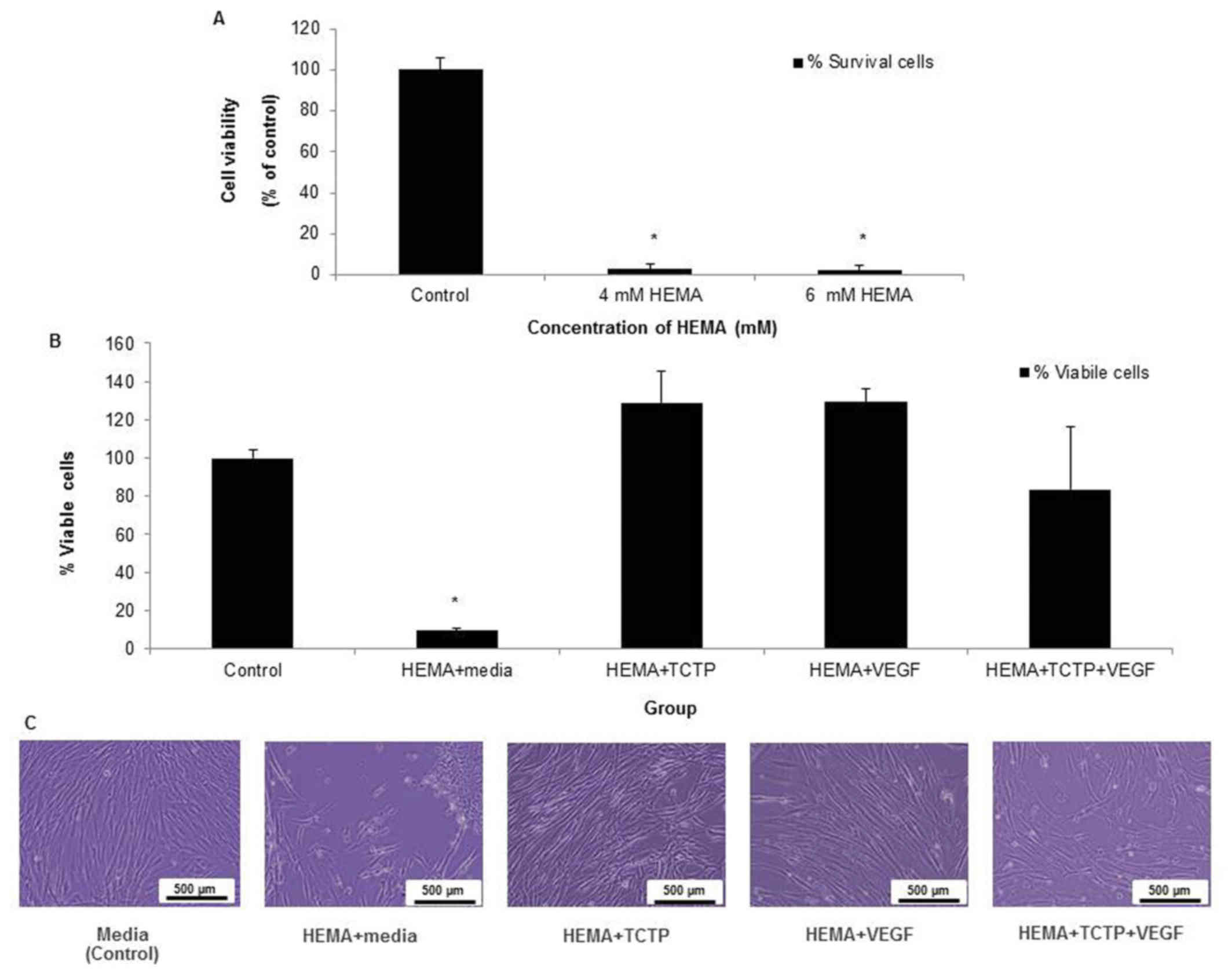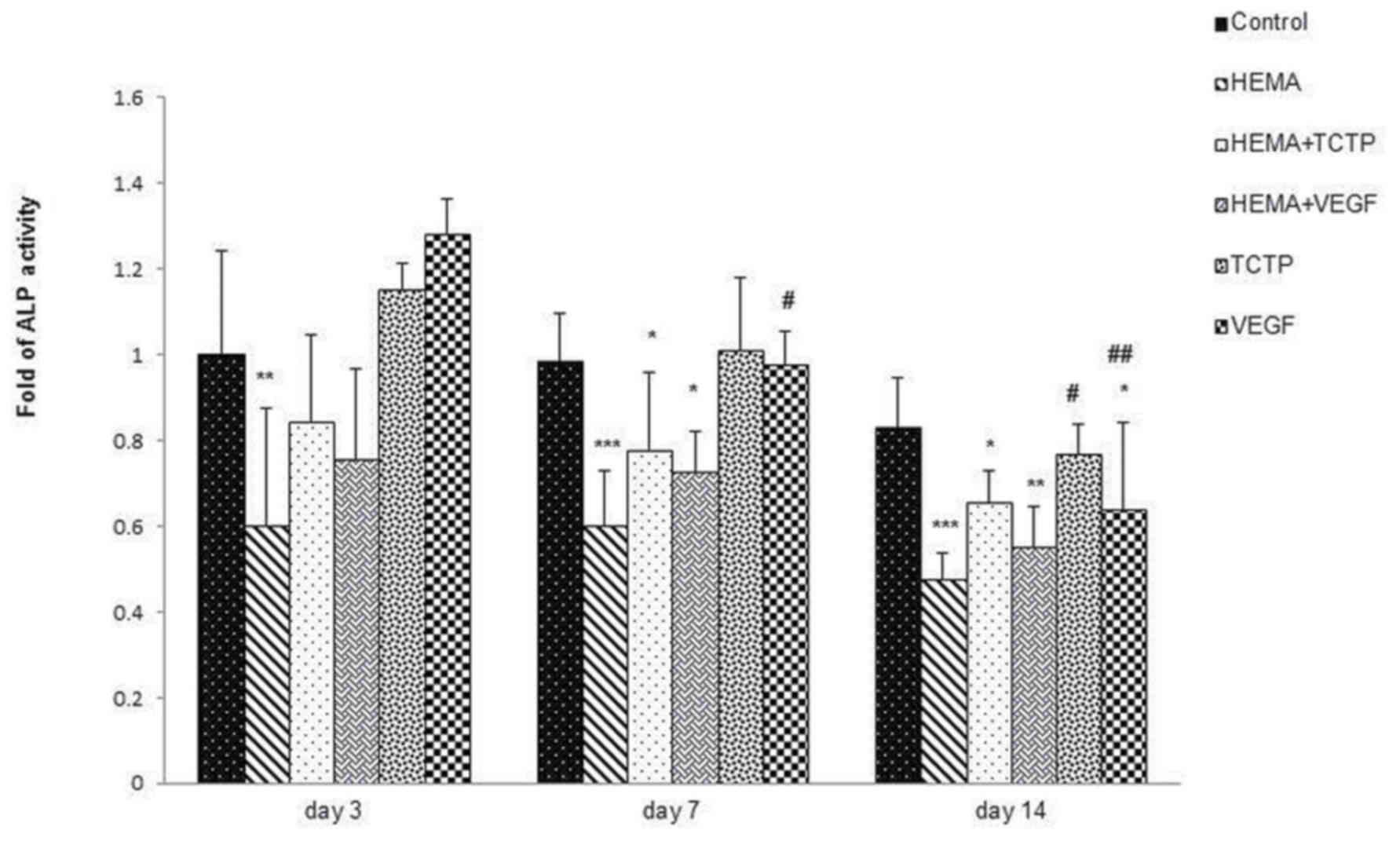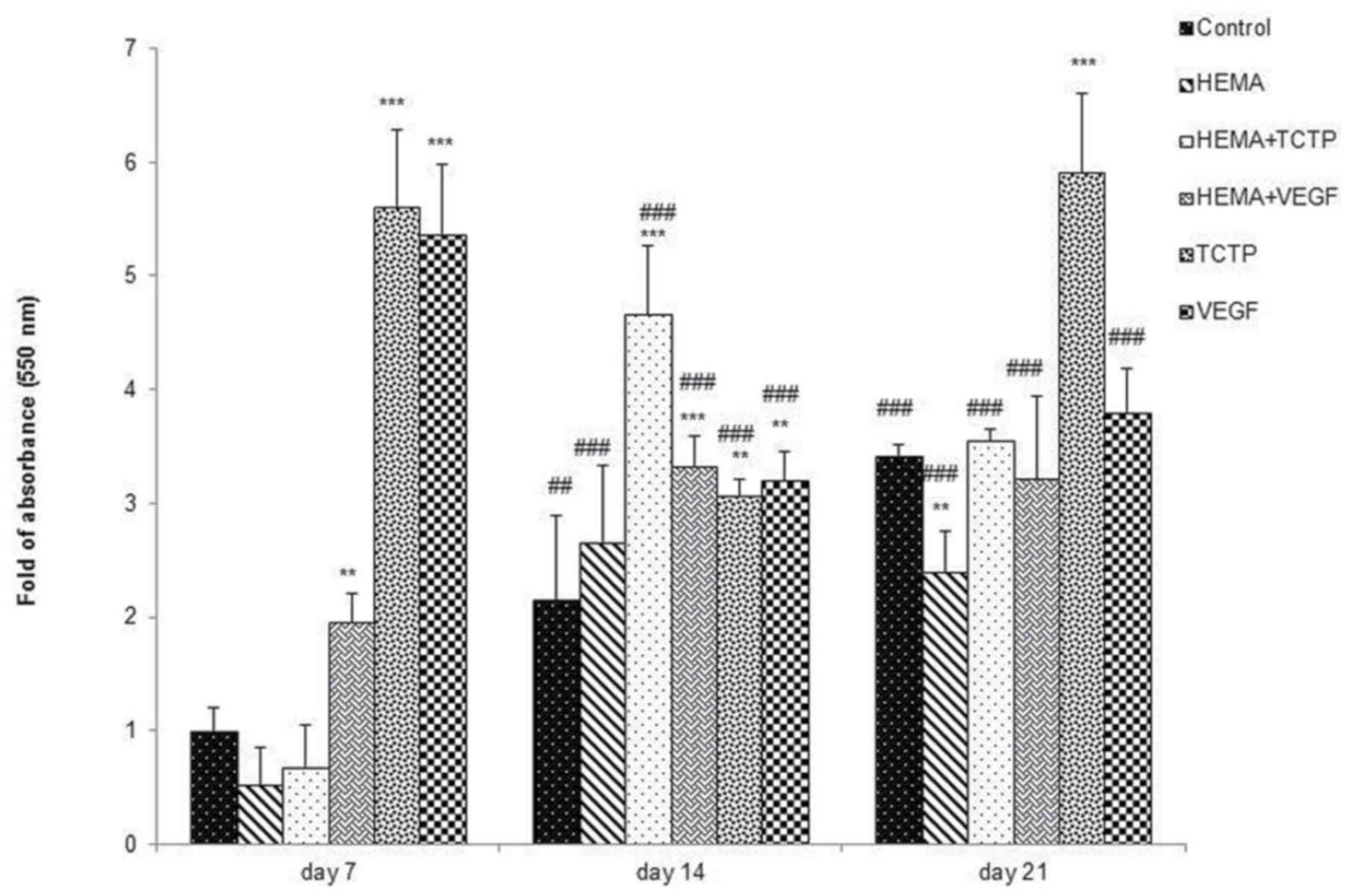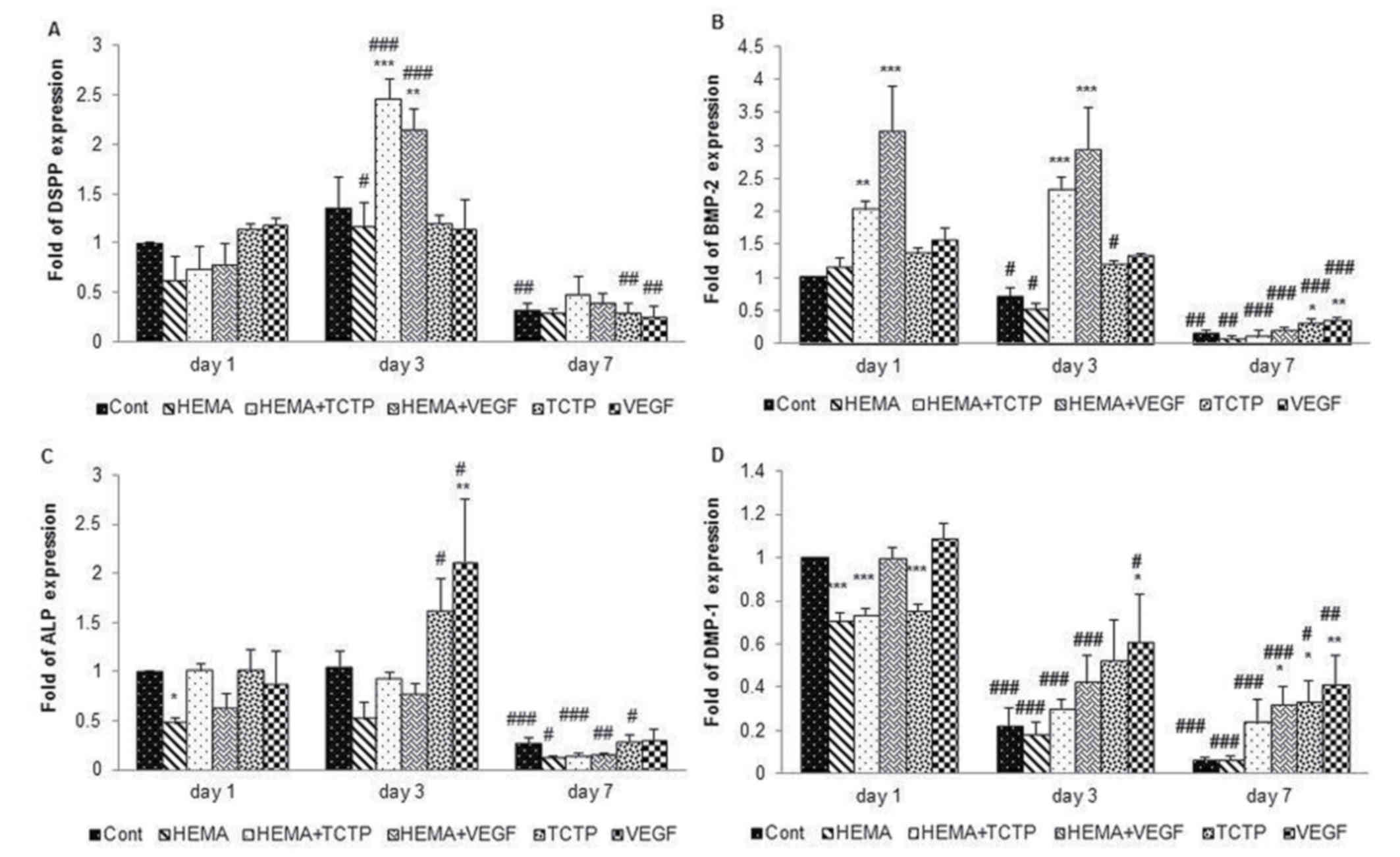|
1
|
Virtej A, Løes S, Iden O, Bletsa A and
Berggreen E: Vascular endothelial growth factors signalling in
normal human dental pulp: A study of gene and protein expression.
Eur J Oral Sci. 121:92–100. 2013. View Article : Google Scholar : PubMed/NCBI
|
|
2
|
Zhang J, Liu X, Yu W, Zhang Y, Shi C, Ni
S, Liu Q, Li X, Sun Y, Zheng C and Sun H: Effects of human vascular
endothelial growth factor on reparative dentin formation. Mol Med
Rep. 13:705–712. 2016. View Article : Google Scholar : PubMed/NCBI
|
|
3
|
Yadlapati M, Biguetti C, Cavalla F, Nieves
F, Bessey C, Bohluli P, Garlet GP, Letra A, Fakhouri WD and Silva
RM: Characterization of a vascular endothelial growth factor-loaded
bioresorbable delivery system for pulp regeneration. J Endod.
43:77–83. 2017. View Article : Google Scholar : PubMed/NCBI
|
|
4
|
Li X, Ma C, Xie X, Sun H and Liu X: Pulp
regeneration in a full-length human tooth root using a hierarchical
nanofibrous microsphere system. Acta Biomater. 35:57–67. 2016.
View Article : Google Scholar : PubMed/NCBI
|
|
5
|
Matsushita K, Motani R, Sakuta T,
Yamaguchi N, Koga T, Matsuo K, Nagaoka S, Abeyama K, Maruyama I and
Torii M: The role of vascular endothelial growth factor in human
dental pulp cells: Induction of chemotaxis, proliferation and
differentiation and activation of the AP-1-dependent signaling
pathway. J Dental Res. 79:1596–1603. 2000. View Article : Google Scholar
|
|
6
|
Gerber HP, McMurtrey A, Kowalski J, Yan M,
Keyt BA, Dixit V and Ferrara N: Vascular endothelial growth factor
regulates endothelial cell survival through the
phosphatidylinositol 3′-kinase/Akt signal transduction pathway.
Requirement for Flk-1/KDR activation. J Biol Chem. 273:30336–30343.
1998. View Article : Google Scholar : PubMed/NCBI
|
|
7
|
Latham AM, Odell AF, Mughal NA, Issitt T,
Ulyatt C, Walker JH, Homer-Vanniasinkam S and Ponnambalam S: A
biphasic endothelial stress-survival mechanism regulates the
cellular response to vascular endothelial growth factor A. Exp Cell
Res. 318:2297–2311. 2012. View Article : Google Scholar : PubMed/NCBI
|
|
8
|
Zhong Q, Zhou Y, Ye W, Cai T, Zhang X and
Deng DY: Hypoxia-inducible factor 1-alpha-AA-modified bone marrow
stem cells protect PC12 cells from hypoxia-induced apoptosis,
partially through VEGF/PI3K/Akt/FoxO1 pathway. Stem Cells Dev.
21:2703–2717. 2012. View Article : Google Scholar : PubMed/NCBI
|
|
9
|
Mantellini MG, Botero T, Yaman P, Dennison
JB, Hanks CT and Nor JE: Adhesive resin and the hydrophilic monomer
HEMA induce VEGF expression on dental pulp cells and macrophages.
Dent Mater. 22:434–440. 2006. View Article : Google Scholar : PubMed/NCBI
|
|
10
|
Ginzkey C, Zinnitsch S, Steussloff G,
Koehler C, Hackenberg S, Hagen R, Kleinsasser NH and Froelich K:
Assessment of HEMA and TEGDMA induced DNA damage by multiple
genotoxicological endpoints in human lymphocytes. Dent Mater.
31:865–876. 2015. View Article : Google Scholar : PubMed/NCBI
|
|
11
|
Di Nisio C, D'Aurora M, di Giacomo V,
Stuppia L, Cataldi A and Gatta V: Transcriptome modifications in
human gingival fibroblasts exposed to 2-hydroxyethyl methacrylate.
Gene. 582:38–46. 2016. View Article : Google Scholar : PubMed/NCBI
|
|
12
|
Kwon JH, Park HC, Zhu T and Yang HC:
Inhibition of odontogenic differentiation of human dental pulp
cells by dental resin monomers. Biomater Res. 19:82015. View Article : Google Scholar : PubMed/NCBI
|
|
13
|
Amson R, Pece S, Marine JC, Di Fiore PP
and Telerman A: TPT1/TCTP-regulated pathways in phenotypic
reprogramming. Trends Cell Biol. 23:37–46. 2013. View Article : Google Scholar : PubMed/NCBI
|
|
14
|
Nagano-Ito M and Ichikawa S: Biological
effects of Mammalian translationally controlled tumor protein
(TCTP) on cell death, proliferation and tumorigenesis. Biochem Res
Int. 2012:2049602012. View Article : Google Scholar : PubMed/NCBI
|
|
15
|
Wanachottrakul N, Chotigeat W and
Kedjarune-Leggat U: Translationally controlled tumor protein
against apoptosis from 2-hydroxy-ethyl methacrylate in human dental
pulp cells. J Mater Sci Mater Med. 22:1479–1487. 2011. View Article : Google Scholar : PubMed/NCBI
|
|
16
|
Wanachottrakul N, Chotigeat W and
Kedjarune-Leggat U: Effect of novel chitosan-fluoroaluminosilicate
resin modified glass ionomer cement supplemented with
translationally controlled tumor protein on pulp cells. J Mater Sci
Mater Med. 25:1077–1085. 2014. View Article : Google Scholar : PubMed/NCBI
|
|
17
|
Grando Mattuella L, Westphalen Bento L, de
Figueiredo JA, Nor JE, de Araujo FB and Fossati AC: Vascular
endothelial growth factor and its relationship with the dental
pulp. J Endod. 33:524–530. 2007. View Article : Google Scholar : PubMed/NCBI
|
|
18
|
Gerber HP, Dixit V and Ferrara N: Vascular
endothelial growth factor induces expression of the antiapoptotic
proteins Bcl-2 and A1 in vascular endothelial cells. J Biol Chem.
273:13313–13316. 1998. View Article : Google Scholar : PubMed/NCBI
|
|
19
|
Dias S, Shmelkov SV, Lam G and Rafii S:
VEGF(165) promotes survival of leukemic cells by Hsp90-mediated
induction of Bcl-2 expression and apoptosis inhibition. Blood.
99:2532–2540. 2002. View Article : Google Scholar : PubMed/NCBI
|
|
20
|
Susini L, Besse S, Duflaut D, Lespagnol A,
Beekman C, Fiucci G, Atkinson AR, Busso D, Poussin P, Marine JC, et
al: TCTP protects from apoptotic cell death by antagonizing bax
function. Cell Death Different. 15:1211–1220. 2008. View Article : Google Scholar
|
|
21
|
Thebault S, Agez M, Chi X, Stojko J, Cura
V, Telerman SB, Maillet L, Gautier F, Billas-Massobrio I, Birck C,
et al: TCTP contains a BH3-like domain, which instead of
inhibiting, activates Bcl-xL. Sci Rep. 6:197252016. View Article : Google Scholar : PubMed/NCBI
|
|
22
|
Suzuki S, Haruyama N, Nishimura F and
Kulkarni AB: Dentin sialophosphoprotein and dentin matrix
protein-1: Two highly phosphorylated proteins in mineralized
tissues. Arch Oral Biol. 57:1165–1175. 2012. View Article : Google Scholar : PubMed/NCBI
|
|
23
|
Li B, Wang H, Qiu G, Su X and Wu Z:
Synergistic effects of vascular endothelial growth factor on bone
morphogenetic proteins induced bone formation in vivo: Influencing
factors and future research directions. Biomed Res Int.
2016:28695722016. View Article : Google Scholar : PubMed/NCBI
|



